Find a book

A Book a Month
We can send a book a month for six or twelve months - the perfect gift. More »

Café Music
Listen to our album of Café Music while browsing the site. More »

A parallel in pictures to the world of Persephone Books.
To subscribe, enter your email address below and click 'Subscribe'.
8 November 2019
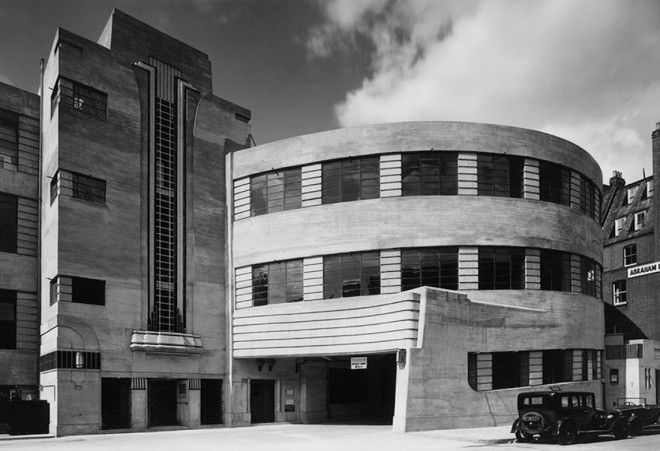
Designed by the same team of architects as the Hoover Building in Ealing, the Daimler Hire Car Garage (just behind Tottenham Court Road) was built in 1931 as the company’s head office. The offices were on the ground level and the deluxe chauffeur-driven cars were housed on the upper levels (the terrible Mrs Featherstone Hogg has one in Miss Buncle’s Book). © Image by McMann London
7 November 2019
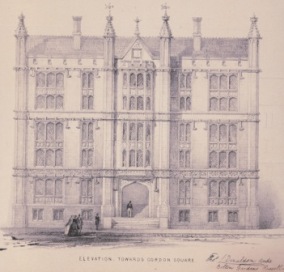
Dr Williams, an Irish minster, left his collection of over 7,500 books as a library for theological students when he died in 1716. It moved to this mock-Tudor building on Gordon Square, a former hall of residence for University of London students, in 1890. Dr Williams’ Library made headlines in 2006 when it sold its prize possession, a copy of Shakespeare’s First Folio containing all thirty-six of Shakespeare’s plays, for £2.8 million at Sotheby’s (making it then the world’s most expensive book).
6 November 2019
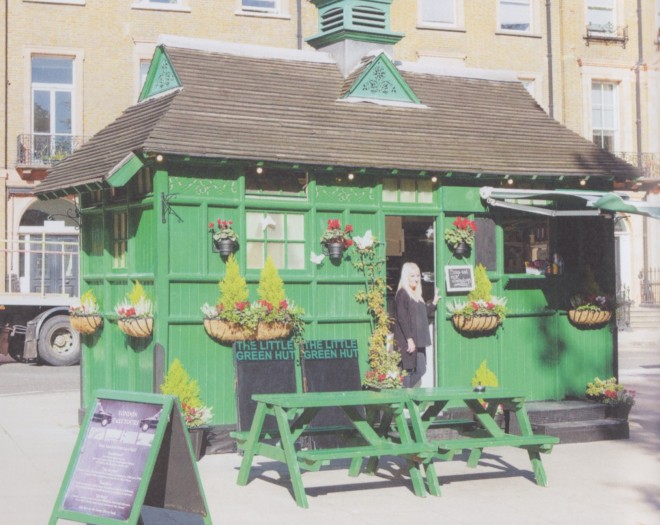
There are just thirteen of these small green huts left in London, one of which is on the north-west corner of Russell Square. They are Cabmen’s Shelters, erected by the Cabmen’s Shelter Fund in the 1870s, headed by the 7th Earl of Shaftesbury who saw the necessity for providing places of warmth and refreshment for the hard-working cabmen of the city. They had to follow strict guidelines as they were built on public footpaths so could be no larger than a standard horse and cart and all swearing, drinking and gambling were banned. Only qualified cabbies were allowed inside, a rule which still applies today. ©Image Lucy McMurdo
5 November 2019
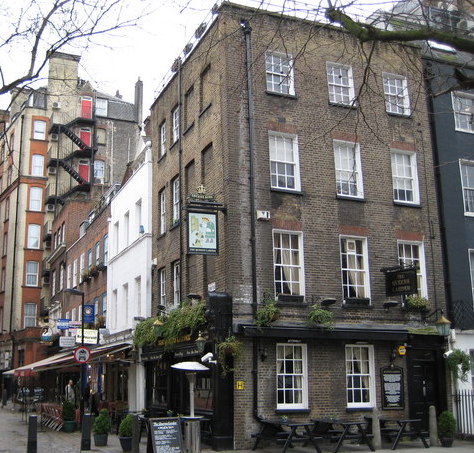
The Queen’s Larder pub is a 4 minute walk from Persephone Books and has a very interesting history. It was built before the rest of Queen Square when it looked over open fields. Soon, three sides of Georgian housing and been built along the east, west and south sides of the Square; the north side was left open so that residents had views up to the hills of Hampstead and Highgate (and therefore could benefit from the country air). The Square’s reputation for health was such that when George III had another of his bouts of illness in 1788, Queen Charlotte sent him to live with his physician Dr Willis there. It is said that she rented the cellars beneath the pub to store the King’s favourite food and ales and so the pub has been called The Queen’s Larder ever since.
4 November 2019

By popular demand; another week of Bloomsbury buildings. Here is the postcard of Russell Square by Ann Usborne which we sell in the shop (and, surprisingly, it seems we’ve never put this on the Post before). It is certainly not a ‘lesser-known’ Bloomsbury site; lots of Persephone readers will have waited for the lifts here on their way to see us in the shop. But it is an important example of Edwardian baroque architecture and amongst a small group of stations to have Grade II listed status. It was one of the first designed by Leslie Green (1875-1908) for the Underground Electric Railways in the early 1900s and created a ‘brand’ of station design (the strong red tiles and the distinctive typeface) that was soon replicated all over London.
1 November 2019
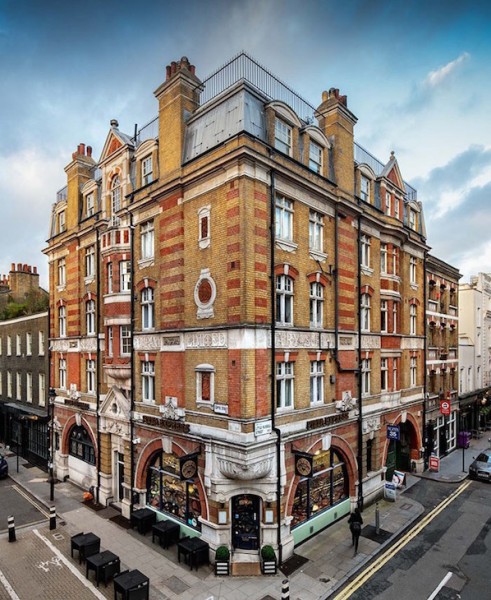
This is the Dairy Supply Company building, on the corner of Coptic Street just south of the British Museum, which was built in 1888. George Barham (1836-1913) founded his business in the 1860s when the outbreak of cattle plague was severely impacting the supply of milk to cities. He imported it directly from Derbyshire farms to Bloomsbury and was soon providing almost fifty per cent of London’s milk. He also began to design and manufacture dairy utensils. Picture in your mind a Victorian galvanised iron milk churn; that was one of Barham’s inventions for transportation. Image © Historic England
31 October 2019

These are the four caryatids at St Pancras New Church on the Euston Road (seemingly before being cleaned and restored). They are copies of the ones found at the Erechtheion in Athens and were built in 1822 – the church was designed to serve the increasing population of the surrounding area. They guard the entrance to the crypt (and look not unlike the Persephone of our logo). St Pancras Old Church, resting place of Mary Wollstonecraft and many others, stands to the north.
